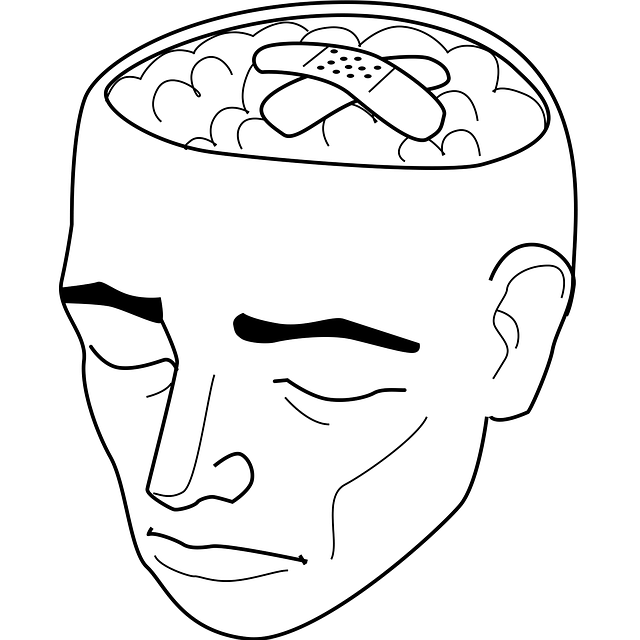Lafayette Sexual Addiction Therapy prioritizes risk assessment and management as a cornerstone of responsible therapy practices. By identifying and evaluating psychological, physical, and emotional hazards, therapists tailor interventions to client needs. Harm minimization strategies, including stress management, mental health education, and self-care routines, empower clients with tools to overcome sexual addiction. Cognitive-behavioral therapy (CBT), mindfulness meditation, and stigma reduction efforts combine for a holistic approach that promotes mental wellness and long-term recovery. Continuous evaluation, adaptation, and client progress monitoring ensure the therapeutic space remains safe, effective, and compassionate, addressing each individual's unique challenges in Lafayette Sexual Addiction Therapy.
Risk assessment and harm minimization are vital components of any therapeutic practice, especially for specialized areas like Lafayette Sexual Addiction Therapy. This article explores the critical process of identifying potential hazards within therapy settings, focusing on sexual addiction. We delve into effective strategies to protect both clients and therapists, highlighting the significance of comprehensive planning and continuous evaluation. By understanding these key aspects, professionals can ensure safe and transformative therapeutic experiences, particularly for vulnerable populations served by Lafayette Sexual Addiction Therapy.
- Understanding Risk Assessment: Identifying Potential Hazards in Therapy
- Harm Minimization Strategies: Protecting Clients and Therapists Alike
- The Role of Lafayette Sexual Addiction Therapy in Vulnerable Populations
- Creating a Comprehensive Plan: Steps to Effective Risk Management
- Continuous Evaluation and Adaptation: Ensuring Safety in Therapy Sessions
Understanding Risk Assessment: Identifying Potential Hazards in Therapy

Risk assessment is a cornerstone of responsible therapy practices, particularly within specialized areas like Lafayette Sexual Addiction Therapy. It involves meticulously identifying and evaluating potential hazards that could arise during therapeutic sessions. These risks can be psychological, physical, or emotional in nature, stemming from various factors including the client’s history, current circumstances, and the therapeutic interventions employed.
Effective risk assessment requires a nuanced understanding of individual client needs and the dynamic nature of therapy. For instance, in Lafayette Sexual Addiction Therapy, therapists must consider not only the risks associated with addiction but also those linked to underlying mental health conditions, trauma histories, or past treatment experiences. By integrating Stress Management and Mental Health Education Programs Design into their risk minimization strategies, therapists can empower clients to cultivate positive thinking and resilience, thereby reducing potential harms and enhancing overall therapeutic outcomes.
Harm Minimization Strategies: Protecting Clients and Therapists Alike

In the realm of Lafayette Sexual Addiction Therapy, harm minimization strategies are pivotal in creating a safe and supportive environment for both clients and therapists. These strategies focus on proactive measures to protect individuals from potential risks associated with sexual addiction and its underlying issues. By integrating conflict resolution techniques, therapists can facilitate open communication, enabling clients to navigate challenging interactions healthily. Moreover, promoting self-care routine development for better mental health becomes an integral part of the therapeutic process, ensuring clients have tools to manage their moods effectively.
Harm minimization planning involves a multi-faceted approach, addressing not only the client’s sexual behaviors but also their emotional well-being. Through structured therapy sessions, therapists guide clients in identifying triggers and developing coping mechanisms. This includes teaching mood management techniques tailored to individual needs, fostering resilience against relapses, and nurturing self-compassion. Such strategies not only aid clients in overcoming sexual addiction but also empower them to maintain long-term recovery, creating a healthier dynamic for both parties involved in the therapeutic journey.
The Role of Lafayette Sexual Addiction Therapy in Vulnerable Populations

Lafayette Sexual Addiction Therapy plays a pivotal role in serving vulnerable populations by addressing complex issues related to sexual addiction and compulsive behaviors. This specialized therapy is designed to help individuals overcome their struggles, offering a safe space for exploration and healing. With a focus on confidentiality and non-judgmental support, the therapists at Lafayette provide an essential service to those who may feel ashamed or stigmatized by their addiction.
In addressing sexual addiction, these mental wellness coaching programs development strategies incorporate evidence-based techniques such as cognitive-behavioral therapy (CBT) and mindfulness meditation. By integrating Mental Health Awareness practices, clients are equipped with coping mechanisms and insights into their behaviors, fostering personal growth and enhanced self-control. This holistic approach ensures that individuals not only manage their addiction but also improve their overall mental wellness and quality of life.
Creating a Comprehensive Plan: Steps to Effective Risk Management

Creating a comprehensive risk assessment plan is akin to crafting a robust defense strategy for Lafayette Sexual Addiction Therapy. It involves meticulous analysis and proactive measures to safeguard individuals seeking therapy and foster a supportive environment. The process begins with identifying potential risks, which can stem from various sources like societal pressures or pre-existing mental health conditions. Once these risks are acknowledged, the next step is prioritizing them based on likelihood and impact.
Effective risk management then involves implementing tailored interventions. This could include integrating Mental Illness Stigma Reduction Efforts to create a non-judgmental space, organizing Stress Management Workshops to equip clients with coping mechanisms, or providing Anxiety Relief techniques during sessions. Regular review and adaptation of the plan are crucial, especially as individuals progress in their therapy journey. By adopting these steps, Lafayette Sexual Addiction Therapy can ensure that harm minimization remains a dynamic process, continually evolving to address emerging challenges and support clients in their personal growth.
Continuous Evaluation and Adaptation: Ensuring Safety in Therapy Sessions

In the dynamic field of therapy, continuous evaluation and adaptation are paramount to ensuring safety and effective treatment, particularly in areas like Lafayette Sexual Addiction Therapy. This involves ongoing monitoring of client progress, assessment of therapeutic outcomes, and a willingness to adjust treatment plans as needed. Therapists must remain agile, incorporating new research, evidence-based practices, and client feedback into their approach to deliver the most current and impactful care. Regular self-awareness exercises and reflection on one’s practice can help therapists identify potential risks or harm minimization strategies that may arise during sessions.
By integrating mental wellness journaling exercise guidance as a tool for both personal and professional development, therapists can enhance their self-awareness and, consequently, their ability to adapt. Public awareness campaigns development around sexual addiction and its treatment can also contribute to a more nuanced understanding of the issue among clients and the community at large, fostering an environment where individuals feel supported in seeking help. This continuous cycle of evaluation, adaptation, and improvement is essential for maintaining a safe, effective, and compassionate therapeutic space tailored to each client’s unique needs.
In conclusion, risk assessment and harm minimization planning are indispensable components of ethical therapy practice, particularly within the realm of Lafayette Sexual Addiction Therapy. By thoroughly identifying potential hazards, implementing protective strategies, and continuously evaluating safety measures, therapists can ensure a secure environment for both clients and themselves. This comprehensive approach not only upholds professional standards but also fosters positive outcomes in treating vulnerable populations.














